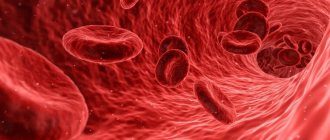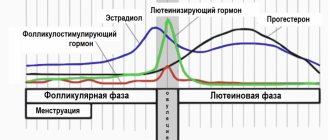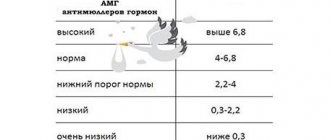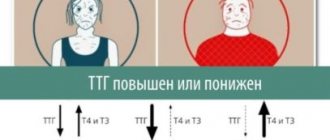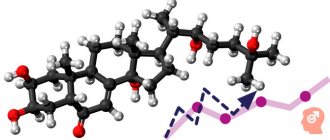Growth hormone (somatotropic hormone, STH) belongs to the category of pituitary hormones. Analysis for growth hormone is necessary in the diagnosis of many diseases, as well as to confirm the initial diagnosis.
Click to make an appointment, ultrasound or tests
DETAILED INFORMATION ABOUT THE ANALYSIS FOR GROWTH HORMONE HGH
This substance is produced in the anterior lobe of the pituitary gland, the name is explained by the fact that this element is responsible for the growth sites in the bones of adolescents and children.
Growth hormone not only has a direct effect on human growth, but also:
- has an anabolic effect (increases formation, slows down protein breakdown);
- accelerates the breakdown of fat (this makes it possible to increase the ratio of adipose tissue to muscle mass);
- controls carbohydrate metabolism (increases the concentration of glucose in human blood);
- ensures calcium uptake by bone tissue.
Indications for a blood test for growth hormone
The content of the article
Blood test for growth hormone
may be prescribed to the patient in the following situations:
- signs of dwarfism;
- symptoms of accelerated growth rates;
- excessive sweating;
- hair growth disorder;
- osteoporosis;
- muscle weakness;
- reduction in blood glucose levels (for example, after drinking alcohol);
- porphyria.
If a patient comes to an initial consultation with a specialist with ready-made test results, he should definitely check the expiration date of hormonal tests.
ADDITIONAL ANALYSIS AND SERVICES
The effect of somatotropin on the body
Course administration of the hormone leads to the following changes in the body:
- Metabolism accelerates.
- The body's protective properties are increased by strengthening the immune system.
- The rate of repair of cellular damage increases.
- Intensive burning of fat deposits occurs.
- Stimulates the formation of proteins and the flow of amino acids into cells.
- The growth of muscle tissue increases.
- The overall endurance of the body increases.
- Cells are rejuvenated.
- Muscles, bones, joints and cartilage are strengthened due to additional activation of collagen and chondroitin sulfate.
- The breakdown of muscle tissue slows down.
- Blood glucose levels increase.
- A wound healing effect is realized.
Some of these effects are exerted by somatotropin itself directly, and the suppressive range of actions is due to insulin-like growth factor (source - Wikipedia).
Somatotropin has a unique property; it simultaneously affects the growth of connective tissues (muscles, ligaments, bones, etc.) and the reduction of the amount of fat in the body.
© designua2 — stock.adobe.com
Taking somatotropin is effective when combined with steroids, which, interacting with each other, lead to the creation of muscle relief and an increase in the effectiveness of drying the body.
What does a growth hormone test show?
Using a growth hormone test, doctors diagnose a decrease in the function of the thyroid gland and pituitary gland, and identify tumors of the pituitary gland and hypothalamus. The study also makes it possible to distinguish acromegaly (enlargement of specific body parts) from gigantism in adults. Analysis results required
and when monitoring the effectiveness of growth hormone treatment.
- A drop in the concentration of the hormone GH in a person’s blood is most often diagnosed if he develops pituitary dwarfism. Only after performing functional tests does the doctor render a verdict (make a diagnosis). A reduction in the blood concentration of growth hormone may be present with excessive function of the adrenal cortex, pituitary dwarfism, under the influence of radiation, chemotherapy procedures, and with hypopituitarism.
- An increase in the level of growth hormone in the patient's blood can serve as a signal of gigantism or acromegaly. If the case seems unclear or doubtful to the attending physician, the concentration of this hormone is tested several times, the interval between tests is one or two months. An increase in the level of growth hormone in the blood is diagnosed with pituitary gigantism, acromegaly, tumors of the stomach and lungs, and malnutrition of the body. Also, such an indicator may be a signal of anorexia neurogenic, liver cirrhosis, uncontrolled diabetes mellitus, and renal failure. And finally, an excess of this substance can be the result of prolonged fasting and stress.
Attention! Only a professional doctor can correctly interpret the results of a growth hormone test.
Somatotropic hormone (STH)
Preparation for the study - 3 days before taking blood, you must avoid sports training. 1 hour before blood collection - smoking. The study is carried out on an empty stomach (12 hours after the last meal). Material for research: blood serum. Determination method: enzyme-linked immunosorbent assay (ELISA) or chemiluminescent immunoassay. Growth hormone, growth hormone, somatotropin (Greek soma, somatos body + tropos direction;) - a protein hormone synthesized in the anterior pituitary gland; The main function of this hormone is to stimulate growth and increase body size by activating the anabolic processes of nitrogen metabolism. HGH also increases the intensity of carbohydrate, fat and mineral metabolism. The biosynthesis and secretion of GH depend on various influences from the central nervous system and endocrine glands, metabolic characteristics, and environmental influences. All these influences are summarized at the level of the hypothalamus, and specific hypothalamic neurohormones regulate the secretion of GH. The effect of GH on tissue is mediated by insulin-like growth factors (somatomedins) and depends on the number and activity of tissue GH receptors. With insufficient secretion of growth hormone from birth or childhood, growth is impaired, and in adult untreated patients it is only 120-130 cm. This also corresponds to the small size of the internal organs (splanchnomicria). Patients also experience a variety of hormonal and metabolic disorders. Pituitary dwarfism (dwarfism) occurs. With excessive secretion of GH, which most often develops in the presence of a hormone-producing tumor of the pituitary gland that synthesizes GH, depending on the degree of maturity (differentiation) of the skeleton, the development of two clinical syndromes is possible: in children and adolescents with incomplete ossification of the skeleton, the growth of bones in length sharply increases with the development of gigantism; in adults with already completed ossification of the epiphyseal cartilaginous growth zones, under the influence of excess growth hormone, the growth of bones in width increases, there is also an increase in the volume of cartilaginous and soft tissues with the expansion of the hands and feet, deformation of the joints, an increase in the size of the nose, ears, brow ridges, lower jaw, costal cartilages, etc. - acromegaly develops. Standard for enzyme immunoassay: up to 7 ng/ml Standard for chemiluminescence immunoassay: healthy adult men and women - children 1-3 years old - m: 0.43 - 2.4 ng/ml; f: 0.5 - 3.5 ng/ml 4-6 years - m: 0.09 - 2.5 ng/ml; f: 0.1 - 2.2 ng/ml 7-8 years - m: 0.15 - 3.2 ng/ml; f: 0.16 - 5.4 ng/ml 9-10 years - m: 0.09 - 1.95 ng/ml; f: 0.08 - 3.1 ng/ml 11 years - m: 0.08 - 4.7 ng/ml; f: 0.12 - 6.9 ng/ml 12 years - m: 0.12 - 8.9 ng/ml; f: 0.14 - 11.2 ng/ml 13 years - m: 0.10 - 7.9 ng/ml; f: 0.21 - 17.8 ng/ml 14 years - m: 0.10 - 7.1 ng/ml; f: 0.14 - 9.9 ng/ml 15 years - m: 0.1 - 7.8 ng/ml; f: 0.24 - 10.0 ng/ml 16 years - m: 0.08 - 11.4 ng/ml; f: 0.26 - 11.7 ng/ml 17 years - m: 0.22 - 12.2 ng/ml; f: 0.3 - 10.8 ng/ml 18-19 years old - m: 0.97 - 4.7 ng/ml; g: 0.24 - 4.3 ng/ml Increased level of growth hormone - with acromegaly it reaches 40-80 ng/ml or more, which is of great diagnostic importance; with gigantism; chronic renal failure; porphyria; hyperglycemia (with improperly treated diabetes mellitus), tumors in the lungs and stomach. A decrease in the level of growth hormone – pituitary dwarfism, the influence of certain drugs – progesterone, glucocorticoids, etc.
What does preparation include?
Preparing for a blood test for growth hormone is very simple; the patient only needs to scrupulously follow the following simple rules. So, before the tests
The following requirements must be met.
- If approximately 3-5 days before the blood test the patient underwent an X-ray or ultrasound examination, scanning, or other medical procedures, it is imperative to inform the attending physician about this.
- Before conducting the study, you need to be more careful about your daily menu. In particular, approximately 5 days before testing for growth hormone,
it is advisable not to eat fried, fatty foods. - It is also highly desirable to avoid all medications that may distort the results of the analysis
. Of course, this is not always possible, but then you need to notify the doctor about it. The exception is when the study is being conducted to test the effectiveness of a treatment. In this case, you need to stop taking the medications prescribed by your doctor on the day of the test. An increase in the concentration of a somatotropic substance in the blood may well be the result of taking drugs such as bromocriptine, glucan, clonidine, estrogen, insulin, adrenocorticotropic hormone, oral contraceptives, and so on. Ideally, any drug that cannot be stopped should be discussed with your doctor. - Three days before the blood test for hormones,
it is strictly forbidden to drink alcohol. It is advisable to give up cigarettes at least on the day of the study (the sooner the better). - 12 hours before the blood
test , you can drink only clean water, since the manipulation must be carried out on an empty stomach. It is also prohibited to consume any other drinks - tea, coffee, mineral water, juice. - Excessive physical activity can also reduce the quality of test results. About three days before donating blood for research, it is better to start abstaining from physical exercise and playing any sports.
If a blood test for growth hormone is repeated, it is advisable to take it in the same laboratory at approximately the same time. Where do hormone tests come from? The answer to this question is from the patient’s vein. The turnaround time for tests depends on the specific laboratory.
Characteristic
Growth hormone is actively synthesized in children of the first year of life, during adolescence and causes linear growth of predominantly tubular bones , due to which a person grows. But bone growth also involves its overgrowth with muscle tissue, which is also facilitated by somatotropin.
This property of the hormone was very popular with professional athletes, who began to use it to build muscle mass. In elite sports, the use of the hormone is strictly prohibited by anti-doping rules, but those who want to get a sculpted body with elastic muscles actively take somatotropin, which is an anabolic substance (source in English - Publications of Harvard Medical School).
Growth hormone is formed in the pituitary gland, and then in the liver is converted into insulin-like growth factor, which is primarily interesting to us, since it is what stimulates cell growth in the body.
© designua — stock.adobe.com
How to correctly decipher the analysis results
Blood test for
growth
hormone should normally
provide the following indicators:
- 2-15 ng/ml in women;
- 2-10 ng/ml in men.
Deviations from the norm in the analysis results
may indicate the following problems in the patient.
- An increased concentration of growth hormone in human blood can be detected in cases of malnutrition, tumors of the lungs, stomach, acromegaly, dwarfism, and pituitary gigantism. An increase in this figure can be caused by prolonged refusal of food or excessive physical activity of the patient. This study result is also possible with neurogenic anorexia, liver cirrhosis, uncontrolled diabetes mellitus, and renal failure.
- A reduced concentration of growth hormone in the blood
, which is detected during the
analysis
, may be present as a result of hypopituitarism, excessive function of the adrenal cortex, or pituitary dwarfism. Also, the level of this substance may decrease after exposure to radiation or chemotherapy.
The results of the study can indicate whether the patient has a tumor of the hypothalamus, pituitary gland, and make it possible to detect a reduction in the functioning of the thyroid gland and pituitary gland. It can also be used to distinguish acromegaly from gigantism and monitor the effectiveness of treatment with growth hormone.
Clinical manifestations
GH deficiency in adults is characterized by systemic changes in metabolism with nonspecific clinical manifestations [6].
– Body composition.
An increase in adipose tissue mass, mainly due to visceral fat, a decrease in lean mass [7–9], a decrease in extracellular fluid volume and total sodium concentration [10].
– Physical activity
. Decreased tolerance to physical activity, decreased muscle strength against the background of a decrease in the amount of muscle tissue [11]. Impaired thermoregulation [12].
– Cardiovascular system, lipid metabolism and blood coagulation system
. Increased cardiovascular risk due to dyslipidemia, carbohydrate metabolism disorders and accelerated development of atherosclerosis. Reduced myocardial mass, impaired conductivity, contractility and stroke volume, decreased pumping function and ejection fraction, diastolic dysfunction [13]. Dyslipidemia due to increased concentrations of total cholesterol, LDL cholesterol and triglycerides [14]. Increased activity of fibrinogen and plasminogen activator inhibitor type 1 (PAI-1) [15].
– Carbohydrate metabolism
. Impaired glucose tolerance, insulin resistance [16].
– Skeletal system
. Reduced bone mass and bone mineral density (BMD), increased risk of fractures [17–19].
– Quality of life and cognitive function
. Decreased quality of life: maladjustment, decreased self-esteem, anxiety, apathy, depression, social isolation [20].
Rules for training when taking the hormone
Athletes taking hormones should remember the rules for effective training:
- Alternating loads on different muscle groups. To build muscle mass and increase the effectiveness of exercise, all muscles need to be divided into 3 groups. During each individual workout, you only need to load 1 muscle group.
- The optimal training time is from 1 to 2 hours. All exercises are repeated in 8 approaches, the complex itself must be repeated at least 3 times.
- Before starting a workout, you need to stretch your muscles and prepare them for the upcoming loads. Growth hormone leads to an increase in muscle mass, creates additional stress on joints and other elements of the musculoskeletal system that cannot keep up with it, which can cause injury.
- The intensity of the load should be increased from workout to workout so that the muscles receive the appropriate development impulse.
- After completing the course of taking the hormone, it is necessary to gradually reduce the load and intensity of exercise by about a third of the achieved result, so as not to destroy muscle tissue. And then gradually bring it to the usual level that was before taking somatotropin.
Interfering factors
Increases: Alpha-adrenergic stimulants (Norepinephrine, Clonidine), Beta-adrenergic blockers (Propranolol), Dopaminergic stimulants (Levodopa, Bromocriptine, Apomorphine), Serotonergic stimulants (L-tryptophan), ACTH, Vasopressin, Estrogens, Dopamine, Serotonin, Alphadopa, Insulin, Vitamin PP, Amphetamine, amino acids (Arginine), Diazepam, Indomethacin, Interferon. Reduces: Progesterone, Glucocorticoids, Glucose, Alpha-adrenergic stimulants, Alpha-adrenergic blockers (Phentolamine), Beta-adrenergic agonists (isoproterenol, Dopamine), Serotonin receptor antagonists (Methysegride, Cyproheptadine), Dopamine blockers, Bromocriptine (for Acromegaly), Phenothiazine derivatives , Somatostatin.
Sources[edit | edit code]
- Rennie MJ (April 2003). "Claims for the anabolic effects of growth hormone: a case of the emperor's new clothes?". Br J Sports Med 37(2):100–5.
- Harvard Health Letter. Harvard Health Publications. 2008-01-01. “Used by athletes to build muscle, human growth hormone may in fact make muscles bigger, but not necessarily stronger. HGH is also marketed as an anti-aging treatment, but there are no data about possible side effects from long-term use."
- Rennie MJ (April 2003). "Claims for the anabolic effects of growth hormone: a case of the emperor's new clothes?". Br J Sports Med 37(2):100–5.
- Harvard Health Letter. Harvard Health Publications. 2008-01-01. “Used by athletes to build muscle, human growth hormone may in fact make muscles bigger, but not necessarily stronger. HGH is also marketed as an anti-aging treatment, but there are no data about possible side effects from long-term use."
- https://www.growthhormoneigfresearch.com/article/S1096-6374(17)30053-9/fulltext
- Bamberger CM, Mönig H, Mill G, Gödde E, Schulte HM. Growth hormone secretion in response to the new centrally acting antihypertensive agent moxonidine in normal human subjects: comparison to clonidine and GHRH. Exp Clin Endocrinol Diabetes. 1995;103(3):205-8.
- ↑ 7,07,17,27,37,47,57,67,77,8 Ronald KLATZ. "RESEARCH OF GROWTH HORMONE"
- Davis LL, Trivedi M, Kramer GL, Rush AJ, Orsulak PJ, Akers L, Petty F. Growth hormone response to baclofen: a comparison of 10-mg and 20-mg doses in healthy men. Department of Psychiatry, University of Texas Southwestern Medical Center, Dallas, USA.
- Nindl BC et al. Twenty-hour growth hormone secretory profiles after aerobic and resistance exercise //Medicine and science in sports and exercise. – 2014. – T. 46. – No. 10. – S. 1917-1927.
Treatment
To reduce STH
When problems are detected early, drug therapy is usually started. Drugs that inhibit the functioning of the pituitary gland are used; most often they are based on the hormone somatostatin, and, as a result, the hormone somatropin is released in a smaller volume.
If the cause of increased growth hormone is a tumor in the brain, then more radical measures are taken:
- surgical intervention, which results in the removal of the tumor;
- irradiation is used extremely rarely and only when surgical treatment is impossible.
To increase growth hormone
To increase growth hormone, surgery is used if the problem is caused by a tumor; in other cases, conservative treatment is used.
If therapy is prescribed to a child, then hormones are used that adjust the thyroid gland to function properly.
Among them are:
- glucocorticosteroids;
- estrogens;
- progesterone;
- testosterone;
- thyroid regulators.
If treatment is intended for an adult, then drugs are prescribed that stabilize the hormone level in the short term and for a long time.
These include:
- Rastan;
- Humatrope;
- Biosome;
- Somatropin;
- Norditropin;
- Genotropin and analogues.
Genotropin Rastan Biosome Norditropin Somatotropin Humatrope
In general, all these drugs are designed to enhance protein production, have a positive effect on mineral metabolism, and increase body weight and height. Since medications have a serious effect on the body, you will definitely need a prescription to purchase them. It is also necessary to follow the treatment regimen prescribed by the doctor, even if the instructions for use say differently.
Non-drug treatments
How to increase growth hormone through nutrition?
To do this, you must not only adhere to a certain diet, but also follow a number of nutritional rules, such as:
- eat fractionally (5-6 times a day) and in small portions;
- have dinner at least 3 hours before bedtime;
- drink at least 2 liters of clean water without gas per day;
- Eat the maximum amount of slow carbohydrates in the first half of the day;
- give up fatty, fried, salty, flour and sweet foods, as well as alcohol;
- Try to boil, steam or bake foods;
- Vegetables and fruits are eaten raw.
The menu should be varied and balanced and include the following products:
- dairy and fermented milk;
- meat;
- fish and seafood;
- legumes;
- cereals;
- eggs;
- nuts;
- vegetables, fruits, berries, herbs;
- vegetable oils.
Physical exercise.
You can increase the level of growth hormone if you regularly (at least 3 times a week for 45 minutes) train your muscles. The exercises don’t have to be complicated; even regular walking at a rhythmic pace or running will do. Ideally, it will take place in the fresh air - this will increase the effectiveness of the training.
If possible, then in addition to running (walking), it would be good to include anaerobic exercises in the complex, and after them - strength exercises.
Night sleep.
It is one of the most important components of lifestyle, allowing you to increase the level of growth hormone. But in order for sleep to “work”, you need to go to bed no later than 22 hours, and the duration of sleep must be at least 8 hours.
By following these simple rules, you can prevent the development of growth hormone deficiency, and if it is present, you can increase it faster and more effectively.

